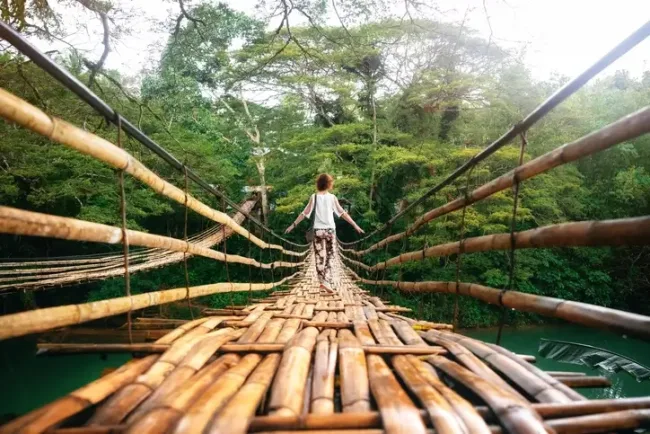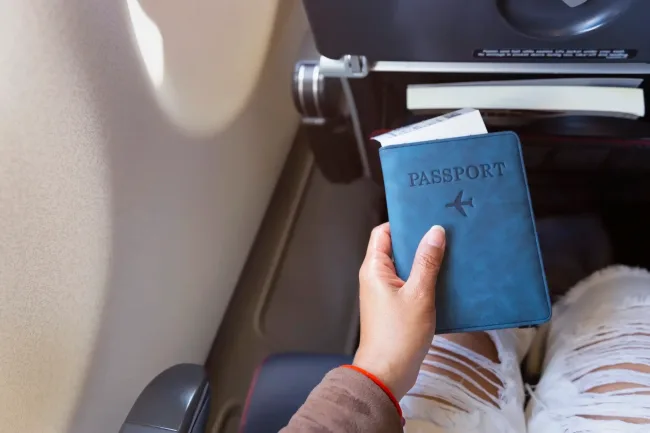
Welcome to Philippines
Traveling to the Philippines? You may need a visa – find out if you do, which type, and how to apply so you can get the paperwork out of the way and focus on your trip.

What’s a Philippines eArrival Card and who’s it for?
Who’s the Philippines eArrival Card for?
The Philippine government asks that everyone, locals and visitors alike, show this document before taking off or when landing in the country. It’s also required for all travelers entering the Philippines through a land border.
What’s the purpose of a Philippines eArrival Card?
This card is meant to monitor the health of travelers and locals by asking visitors if they show any symptoms of health issues and state their contact info in case of an emergency.
Please note: This is not a visa. If eligible, you must also have a valid visa in addition to an eArrival Card.
How long can you stay with a Philippines eArrival Card? Valid for a Single Entry for your entire stay in the Philippines.
What’s a Philippines Travel Authorization (eTA) and who’s it for?
Who’s the Philippines Travel Authorization for?
Currently, only Taiwanese citizens can get the eTA instead of a traditional paper visa.
Who isn’t eligible for the Philippines Travel Authorization?
Travelers who are not from Taiwan that are able to visit the Philippines visa-free; those who need an eVisa or traditional visa, and those who must get another travel document to enter the country.
What’s the purpose of a Philippines Travel Authorization? The eTA is meant for tourist purposes only.
How long can you stay with a Philippines Travel Authorization?
The travel authorization lets you hop in and out of the Philippines multiple times within its 30-day validity.
At iVisa, we don’t currently offer the Travel Authorization, but you can find out more from the nearest Philippines Embassy or Consulate.
What’s a Philippines Non-Immigrant Visa and who’s it for?

Who’s the Philippines Non-Immigrant Visa for?
Travelers from around 40 countries, including India, China, Algeria, Iran, Afghanistan, Pakistan, Egypt, Libya, Sudan, Nigeria, Ukraine, Belarus, Iraq, Sierra Leone, Somalia, and more.
Who isn’t eligible for the Philippines Non-Immigrant Visa?
-
Tourists from China holding a valid visa issued by Australia, Canada, Japan, the United States, or a Schengen Area state may enter and stay without a visa for up to 7 days.
-
Those with visa-free access to the Philippines, including nationals from Israel, Brazil, European Union countries, ASEAN member states, and many more.
What’s the purpose of a Philippines Non-Immigrant Visa?
It allows temporary visits for tourism, medical treatment, business, attending a cultural, academic, or sports event, visiting family members, or another short-term purpose that does not require the holder to work.
**How long can you stay with a Philippines Non-Immigrant Visa?
The validity depends on your travel purpose and nationality. Generally, a non-immigrant visa allows stays of up to 59 days.
At iVisa, we don’t currently offer the Non-Immigrant Visa, but you can find out more from the nearest Philippines Embassy or Consulate.
What are the Philippines’ long-term visa options?
The Philippines offers several long-term visa options, such as the one for residence. Here are some of the common long-term visas:
-
Philippines Quota Visa: This visa is for high-skilled individuals wanting to live and work in the Philippines. It’s available to you as long as your home country offers the same deal to Filipinos. It's a two-way street!
-
Returning Philippines Resident: If you used to have permanent residence in the Philippines and are returning after a period abroad, this option is for you.
At iVisa, we don’t currently offer these visas, but you can find out more from the nearest Philippines Embassy or Consulate.

Staying healthy in the Philippines: Here’s what you need to know
Healthcare facilities and standards in the Philippines can vary significantly depending on the location and the type of facility. Here's what travelers should know.
Make sure to stay updated on routine vaccines
-
Consider vaccines for diseases like hepatitis A and typhoid, which you can get through contaminated food or water in the Philippines.
-
A yellow fever vaccination certificate is required for travelers aged 9 months and over arriving from an area with a risk of yellow fever transmission.
-
Keep updated with the Philippines' COVID-19 requirements, such as quarantine, testing, or vaccine certificates, through your airline or the Philippines government website.
Medical facilities
-
In cities like Manila, Cebu, and Davao, you can find well-equipped hospitals and clinics with internationally-trained medical staff.
-
Medical services in rural areas may be basic. Emergency services and specialist treatments may be limited, and they could require a transfer to a more well-equipped facility.
-
Pharmacies are widely available, but it's advisable to bring essential medicines, as not all medications available in your home country may be in stock.
Health insurance
We’d always recommend taking out health insurance before you travel anywhere from any destination.
Contact your insurance provider before traveling to ensure you have the right level of coverage.
Other things to consider:
-
Trip cancellation, delay, and interruption benefits.
-
Medical expenses and medical evacuation benefits.
-
Baggage coverage.
Things to be aware of when visiting the Philippines
Keep an extra eye on the following to keep healthy and safe during your trip to the Philippines:
1. Food and water contamination: Issues like travelers' diarrhea can be common. Stick to bottled or boiled water and eat well-cooked food from reputable sources.
2. Mosquito-borne illnesses: Dengue fever, chikungunya, and malaria are present, especially in rural areas and in the monsoon season. Using mosquito repellent and wearing long-sleeved clothing can help prevent bites.
3. Animal hazards: Rabies is prevalent in the Philippines, especially in stray dogs. If bitten, seek medical attention immediately for post-exposure prophylaxis.
Medication for personal use
Follow these tips to bring into the Philippines some over-the-counter medicines:
-
Declare all medications: Report all medicines for personal use to customs authorities.
-
Original packaging: Always keep medicines in their original containers and in transparent bags in your hand luggage.
-
Prescription or doctor's letter: Present the medical prescription issued by your doctor or other competent authority in English.
-
Check for restrictions: Call the Philippines' embassy to verify that all of your prescriptions are legal to bring with you.
-
Quantity aligned with itinerary: Bring only a reasonable quantity that aligns with the duration of your stay to avoid complications.
Need embassy support?
For other consular needs for the Philippines, your first point of contact is the Philippines' Embassy or Consulate in your home country.
Need assistance while traveling in the Philippines? Your home country's embassy or consulate is your go-to place for support. Check our useful Embassies Finder to locate the nearest one.

 India Visa
India Visa
 Turkey Visa
Turkey Visa
 United States Visa
United States Visa
 Australia Visa
Australia Visa
 Colombia Visa
Colombia Visa
 New Zealand Visa
New Zealand Visa
 China Visa
China Visa
 Egypt Visa
Egypt Visa
 Vietnam Visa
Vietnam Visa
 Indonesia Visa
Indonesia Visa
 UK Passport Renewal
UK Passport Renewal
 CA Passport Renewal
CA Passport Renewal
 IE Passport Renewal
IE Passport Renewal


